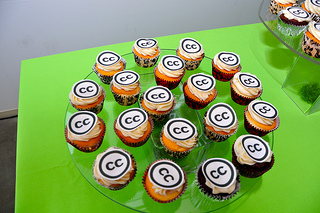Attribution

Title, Author, Source, License
A good rule of thumb is to use the acronym TASL, which stands for Title, Author, Source, License.
Title
What is the name of the material? If a title was provided for the material, include it. Sometimes a title is not provided; in that case, don't worry about it.
Author
Who owns the material? Name the author or authors of the material in question. Sometimes, the licensor may want you to give credit to some other entity, like a company or pseudonym. In rare cases, the licensor may not want to be attributed at all. In all of these cases, just do what they request.
Source
Where can I find it? Since you somehow accessed the material, you know where to find it. Provide the source of the material so others can, too. Since we live in the age of the Internet, this is usually a URL or hyperlink where the material resides.
License
How can I use it? You are obviously using the material for free thanks to the CC license, so make note of it. Don't just say the material is Creative Commons, because that says nothing about how the material can actually be used. Remember that there are six different CC licenses; which one is the material under? Name and provide a link to it.
If the licensor included a license notice with more information, include that as well.
Lastly, is there anything else I should know before I use it?
When you accessed the material originally did it come with any copyright notices; a notice that refers to the disclaimer of warranties; or a notice of previous modifications? (That was a mouthful!) Because that kind of legal mumbo jumbo is actually pretty important to potential users of the material. Best practice is to just retain all of that stuff by copying and pasting such notices into your attribution.
Examples of Attribution
Attributing Unmodified Works
Here is a photo. Following it are some examples of how people might attribute it.

Creative Commons 10th Birthday Celebration San Francisco by tvol is licensed under CC BY 2.0
This is a good attribution. Why?
Title given: "Creative Commons 10th Birthday Celebration San Francisco"
Author given and linked: "tvol"
Source linked: "Creative Commons 10th Birthday Celebration San Francisco" - linked to original Flickr page
License indicated and linked: "CC BY 2.0" - linked to license deed
This is a pretty good attribution. Why?
Title given: Title is not noted (it should be) but at least the source is linked.
Author given: "tvol" but not linked to profile
Source linked: "Photo" - linked to original Flickr page
License indicated and linked: "CC BY" - linked to license deed
Photo: Creative Commons
This is an incorrect attribution. Why?
Title: Title is not noted.
Author: Creative Commons is not the author of this photo.
Source: No link to original photo.
License: There is no mention of the license, much less a link to the license. "Creative Commons" is an organization.
Attributing Modified or Derivative Works
Providing the terms of the license allow you to do so, you can modify or create derivatives of most open resources. Where possible, follow a good model of attribution. Where possible, you may want to indicate the type of derivative you created. It is also good practice to indicate your own license of a modified or derivative work (following the terms of the original license). Don't forget to note if you modified the work yourself (example).
Attributing Multiple Sources
It can be challenging to attribute multiple sources, especially when combining them into a single derivative work. Where possible, indicate clearly which attribution belongs to which work. See this site for more details.
Attribution in specific media
As stated above, best practices for attribution apply as reasonable to the medium you're working with. For media such as offline materials, video, audio, and images, consider:
1. Publishing a web page with attribution information. For example, on a webpage featuring your audio recording, provide a credit list of material you used that adheres to best practices above. Doing so allows not only your material, but the materials you attribute, to be found by search engines and other web discovery tools. If possible within the medium, make the Author, Source, and License links the user can follow.
2. Mentioning the credits within the media itself. For example, crediting videos can be a simple list of the materials used with their associated licenses in a screen at the end of a video. For audio, it can be a verbal recitation of credits at the end of the recording.
Also, several groups are exploring ways to make attribution easier and simultaneously machine-readable for the web. Here are some tools that have been developed:
Open Attribute - a browser plugin for Firefox and Chrome that grabs the CC license metadata on a web page and turns it into an attribution for you
Commons Machinery - a suite of plugins for Firefox and open office tools that enables copying and pasting images with the attribution info already attached.
Attribution: Adapted from Best Practices for Attribution by Creative Commons Wiki, licensed under a CC BY 4.0 International License.